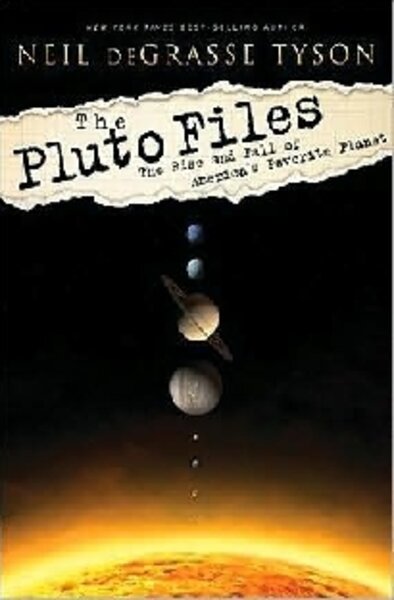The Pluto Files
Loading...
To be both an expert and popularizer, especially in esoteric fields beyond most people’s ken, is to wield a measure of power. Sometimes, however, as astrophysicist Neil deGrasse Tyson indicates in his wonderfully entertaining, The Pluto Files: The Rise and Fall of America’s Favorite Planet, there’s a price to pay for that power.
As director of the Hayden Planetarium and the Rose Center for Earth and Space at the American Museum of Natural History in New York City, Tyson inadvertently came between the public and their favorite planet with his decisions concerning the classification of Pluto in the museum’s state-of-the-art Rose Center, which opened in 2000.
In an effort to create an exhibit that would accommodate new discoveries, Tyson and his team decided to organize “the principal contents of the solar system by objects of like properties, rather than as enumerations of planets and their moons. This decision landed Pluto among the growing number of icy objects found beyond Neptune.”
In other words, Pluto was exiled.
Many viewers noticed that Pluto was missing from the models of the rocky, terrestrial planets (Mercury, Venus, Earth, and Mars) and the gas giants (Jupiter, Saturn, Uranus, and Neptune). One earnest 7-year-old sent a sketch of the missing ninth planet to help the museum correct its oversight – an adorable document respectfully reproduced in Tyson’s book.
But Tyson’s in-box filled with hate mail only after a New York Times reporter filed a front-page story, “Pluto’s Not a Planet? Only in New York,” nearly a year after the Rose Center opened.
Hell hath no fury, it seems, like people forced to alter their concept of the universe.
As a scientist and educator, Tyson – who also hosts the PBS miniseries NOVA “scienceNOW” and has written the popular books “Origins” and “Death by Black Hole” – is well-versed in enlivening his instruction with a toolbox of pedagogic tricks. In “The Pluto Files,” he uses an engaging mix of facts, photographs, cartoons, illustrations, songs, e-mails, and humor to explain what’s up (and down) with Pluto.
Pluto was discovered in 1930 by Clyde Tombaugh, a 24-year-old amateur astronomer at Arizona’s Lowell Observatory. Its name was suggested by an 11-year-old British schoolgirl who, Tyson notes, was obviously unfamiliar with the American mineral water laxative, Pluto Water, whose well-known advertising slogan promised, “When Nature Won’t – Pluto Will.”
In 1931, Disney Studios named Mickey Mouse’s pet pup Pluto, sowing the seeds “for planet Pluto to receive a level of attention from the American public that far exceeds its astrophysical significance in the solar system.”
According to Tyson, the 1977 Voyager explorations caused astronomy’s focus to shift from planets to moons, asteroids, and comets. But Pluto’s real problems began after the first Kuiper Belt icy objects were found in 1992, and it became apparent that the diminutive Pluto was closer in size, composition, and orbit to these icy comets than to either the terrestrial planets or Jovian gas giants.
Tyson’s area of expertise is actually star formation and galaxy evolution rather than planets. Seeking guidance on the Rose Center’s planet exhibits, he convened a panel of experts in 1999 to discuss how to classify Pluto. Amazingly, since ancient Greece, there had been no formal definition of the term “planet.”
This panel became “a watershed event,” clinching the decision to sidestep the issue of labels and group the contents of the solar system “as families of objects with similar properties” – which is how Tyson believes astronomy should be taught.
Never mind mnemonics like “My Very Educated Mother Just Said Uh-Oh No Pluto.” Tyson writes, “Because of exercises such as this, elementary school curricula have unwittingly stunted an entire generation of children by teaching them that a memorized sequence of planet names is the path to understand the solar system.”
When Pluto was officially demoted to a dwarf planet by the International Astronomical Union in August 2006, outbursts of ire and humor followed. A parodist’s headline squawked, “Lack of Federal Funding Leads to Downsizing of Solar System,” while an internal memo at Disney Studios cleverly welcomed Pluto as the eighth dwarf.
Tyson took plenty of flak for his perceived role in eclipsing Pluto. “It’s not easy being a public enemy,” he writes. But he clearly relishes “the demotion commotion.” “The Pluto Files” is positively transporting. Out of this world.
Heller McAlpin, a freelance critic in New York, is a frequent Monitor contributor.



